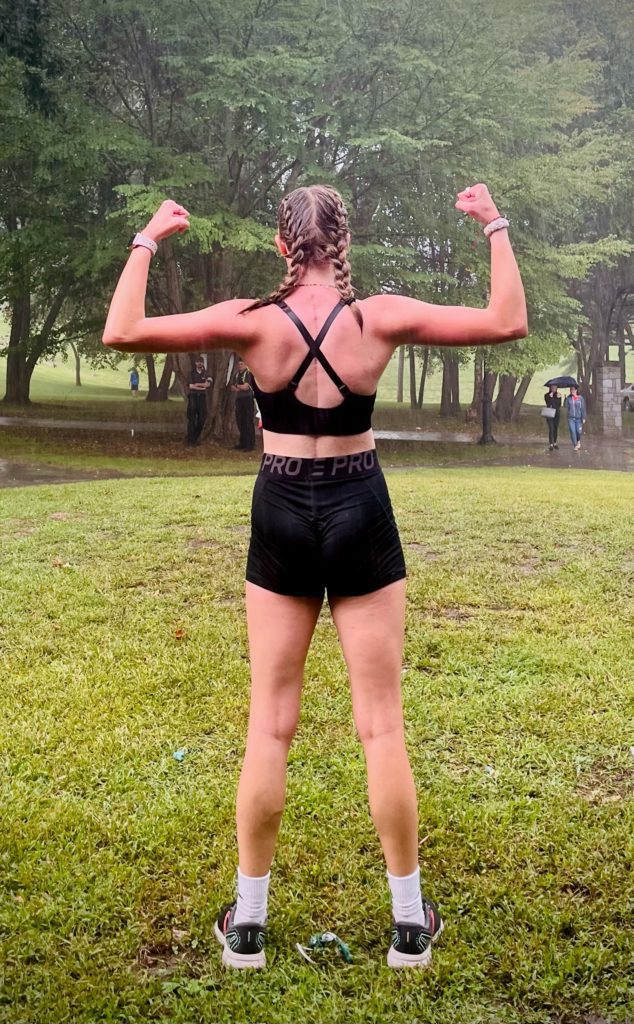This story was contributed by Yale New Haven Health.

Pole vaulters train for the speed of a sprinter, the strength of a gymnast and the courage of a daredevil. But what if you have the spine of someone with scoliosis?
Delaney Phelps of Preston CT, uses an enormous lever to fly through the air, and she is only months past scoliosis surgery. She is one of those bright and kind high school students who inspires hope for the future.
Delaney was in fourth grade when she was diagnosed with scoliosis at her yearly checkup. In a spine affected by scoliosis, the vertebrae is curved like an S or C rather than being in a straight line. This curvature gives the appearance that the person is leaning to one side.
By her freshman year of high school Delaney was in physical therapy and wore a nightly back brace to hold off progression of the curve. This was also around the time she discovered pole vaulting.
“I did cross country and one of the girls on the team was a fantastic pole vaulter –the best in our state. She encouraged me to try vaulting,” said Delaney. “She told me how much she loved it and we have great coaches. Once I tried it, I loved it immediately because the playing field is even – advancing is all about what you can learn.”
When to know if it is time for back surgery
As Delaney progressed in her vaulting career, her spine continued to curve and started causing her pain. It was time to research her options.
The Phelps family contacted Amy Noyes, APRN. “I would describe her as basically our “everything doctor,” said Delaney. “She’s has been with our family for years and was our main connection to the Children’s Hospital.”
The Phelps family was then connected to Dominick Tuason, MD, pediatric spine surgeon at Yale New Haven Children’s Hospital, for her spine surgery. The team worked with Delaney on timing so she would miss as little of the season as possible.
“Many young athletes put off this kind of surgery because they think it will inhibit their performance – but it is actually the opposite,” said Dr. Tuason. “We want kids and teens to go into surgery knowing that with the right physical therapy after surgery, in most cases, they can continue to be high-performing athletes.”
Delaney wanted all the information she could get before surgery. She learned that the surgeon typically uses metal rods and screws to carefully align the spine and support the bones of the spine. Bone grafts are placed to fuse and hold the spine in the correct position and keep it from curving again.
Recovery was intense. Delaney relied on New Haven pizza deliveries from her parents and Taylor Swift music to get her through the first days in the hospital. This down time can be brutal on teens whose lives might revolve around their sport. “It gave me space to realize I can enjoy other things, like I practiced guitar,” said Delaney.
However, Delaney was chomping at the bit to see if she could still vault. She worked on a ramp-up training plan with Dr. Tuason. Four weeks after surgery, Delaney participated in a local charity run.
Delaney’s first time back at the vault was nerve wracking. But mid-vault, at several feet in the air, Delaney’s stress melted. “My form was a little rusty, but I had the confidence that I could get it back at that point.”
Delaney is graduating from high school this year and her plans include joining AmeriCorps where she will travel around the country in service to different communities in crisis and of course, pole vaulting.
This story was sponsored by Yale New Haven Health.
